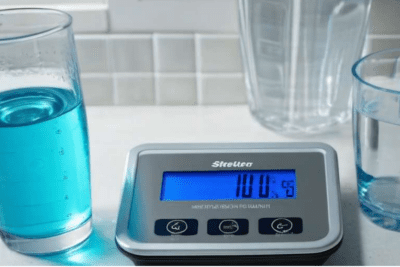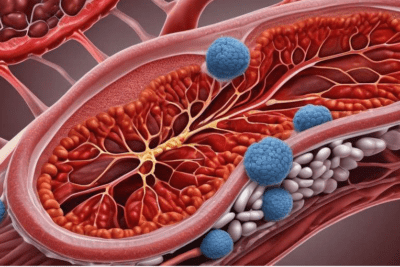
When it comes to managing diabetes or understanding certain medical conditions, knowledge is power. Hypoglycaemia, also known as low blood sugar, is one such condition that can cause both mild and severe symptoms. Learning about What is a hypo (hypoglycaemia)? is crucial for those affected and for their loved ones.
At its core, hypoglycaemia refers to an abnormal decrease in blood glucose levels, which can lead to a variety of symptoms and health concerns. This condition is commonly associated with diabetes, but it can affect individuals without diabetes as well. Understanding its causes, symptoms, and how to manage it can make all the difference in maintaining health and preventing complications.
🔍 Seeking a breakthrough in Type 2 Diabetes management?
Discover our expert insights and innovative approaches on ‘How to Cure Diabetes’.
Click to transform your health journey today!
What you\'ll find in this article?
What is hypoglycaemia?
So, What is a hypo (hypoglycaemia)? Simply put, it's when blood glucose levels drop below normal. For most people, this means a blood sugar level of 70 mg/dL or less. Glucose is the main source of energy for the body's cells, and without enough of it, the body cannot function properly.
Hypoglycaemia can occur in people with diabetes who are taking insulin or certain other glucose-lowering medications. However, it isn't exclusive to diabetic individuals; it can also occur in people without diabetes for various reasons.
Recognizing the signs of low blood sugar and knowing how to respond is essential. A hypo treatment kit often includes some form of fast-acting glucose, such as glucose tablets or gel, which can quickly raise blood sugar levels.
Explore our specialized services in diabetes care 🌟.
From personalized diet plans to effective exercise routines, we have what you need to take control of Type 2 Diabetes.
Visit our services page now!












What causes hypoglycaemia?
The causes of hypoglycaemia are numerous, especially among people with diabetes. The primary factors include an imbalance between insulin, food intake, and physical activity. For non-diabetics, causes can range from certain medications to critical illnesses or hormonal deficiencies.
Medications: Taking too much insulin or other diabetes medications can lower blood sugar too much.
Diet: Skipping meals, eating less than usual, or eating meals with insufficient carbohydrates can lead to low blood sugar.
Exercise: Engaging in physical activity without proper adjustment to medication or carbohydrate intake can trigger hypoglycaemia.
Alcohol: Drinking alcohol, especially on an empty stomach, can interfere with blood sugar regulation.
What are the symptoms of hypoglycaemia?
Symptoms of low blood sugar can vary from person to person, but often include feeling shaky, dizzy, sweaty, hungry, irritable, or having a headache. If blood sugar levels continue to drop without treatment, more severe symptoms such as confusion, seizures, or even loss of consciousness can occur.
It's important to recognize these symptoms early because treating hypoglycaemia quickly can prevent more severe complications. Individuals with diabetes should carry a hypo treatment kit to treat drops in blood sugar promptly.
Furthermore, symptoms can appear differently among individuals, making it essential for each person to become familiar with their unique signs of low blood sugar.
How is hypoglycaemia diagnosed?
Diagnosing hypoglycaemia typically involves a medical review of symptoms and the measurement of blood glucose levels. A healthcare provider may conduct a physical examination, discuss medical history, and review any medications being taken.
If hypoglycaemia is suspected, blood tests can confirm low blood sugar levels. For those with diabetes, regular blood glucose monitoring is a key part of managing their condition and preventing hypoglycaemia.
Diagnosis may also include a review of eating habits, exercise routines, and how these may affect blood glucose levels.
How can hypoglycaemia be prevented?
Preventing hypoglycaemia involves careful management of diabetes, if applicable, and attention to factors that influence blood sugar levels. Here are some strategies to help prevent low blood sugar:
- Monitor blood sugar regularly: Keeping track of blood glucose can help detect patterns and prevent lows.
- Adjust medications: Work with a healthcare provider to ensure diabetes medications are correctly dosed.
- Plan meals: Maintain a regular meal schedule and balance carbohydrate intake with medication and activity levels.
- Treat lows quickly: Always carry a hypo treatment kit or sources of fast-acting glucose.
Preventing hypoglycaemia episodes also requires education and awareness of one's body and how it responds to different stimuli, such as food and activity.
What are the treatments for hypoglycaemia?
The immediate treatment for hypoglycaemia is to raise blood sugar to a normal level. Consuming fast-acting carbohydrates, such as glucose tablets, candy, or fruit juice, is the first step. After treating the immediate low, it's essential to eat a longer-acting carbohydrate to prevent recurrence of hypoglycaemia.
For severe cases where an individual cannot swallow or is unconscious, emergency glucagon injections or intravenous glucose may be necessary. Those with diabetes and their loved ones should know how to use a glucagon kit and when it is appropriate to do so.
Long-term treatment involves addressing the underlying cause, which may include adjusting medications, changing eating patterns, and educating on proper management strategies.
Understanding Hypo (Hypoglycaemia): Deeper Insights
What is the meaning of hypo hypoglycemia?
Hypo, short for hypoglycaemia, refers to a medical condition where blood sugar levels fall below normal. It is a significant concern for individuals with diabetes, as it can affect cognitive and physical functioning.
Understanding hypoglycaemia is essential for managing it effectively and preventing serious health issues.
What is hypo hyperglycemia?
Hyperglycaemia is the opposite of hypoglycaemia and refers to high blood sugar levels. While hypoglycaemia requires immediate action to increase blood sugar, hyperglycaemia treatment involves insulin or other medications to lower blood sugar.
Both conditions require careful monitoring and management for those with diabetes.
What is hypoglycaemia caused by?
Hypoglycaemia is caused by an imbalance between insulin and glucose in the body. This can result from excess insulin, inadequate food intake, increased exercise, or a combination of these factors.
Other causes can include certain medications, alcohol consumption, and underlying health conditions.
What causes hypo hypo?
A "hypo" is caused by blood glucose levels dropping too low. Factors such as irregular meal times, excessive insulin, and over-exertion without adequate carbohydrate intake can trigger a hypo.
Recognizing early signs and having a plan to treat lows are key to managing this condition.
For a visual overview of managing hypoglycaemia, take a look at this informative video:
In conclusion, hypoglycaemia is a condition that requires awareness and proactive management. Whether you have diabetes or not, understanding the causes, symptoms, and treatment for low blood sugar is vital. By paying attention to your body and following medical advice, you can prevent severe episodes and maintain a healthy lifestyle. Remember, if you're ever unsure about your symptoms or treatment, consult with a healthcare professional for guidance.
✨ Other articles you might be interested in:
- Gestational diabetes: Understanding causes and symptoms
- Exploring the possibility of a diabetes cure
- Exploring how insomnia could play direct role in causing type 2 diabetes
- Understanding genital itchiness as a symptom of diabetes in the UK
- Insulin Injection Sites Complications: Effective Solutions to Manage and Prevent



